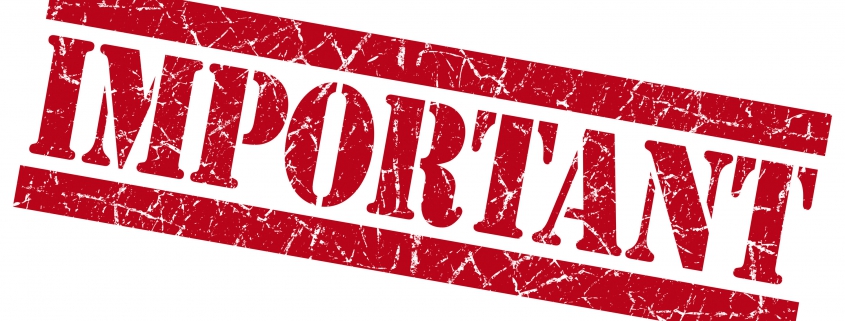How to Complete a Partial 1031 Exchange
A 1031 exchange doesn’t have to be an all-or-nothing move. It is possible to complete a partial 1031 exchange that allows you to either take cash out, purchase less than you sold, or both.
But there are tradeoffs. Completing a partial exchange creates a tax liability you will want to thoroughly understand before moving forward. This article will help you determine if it is a good fit for your personal and financial goals.
Join our partial exchange webinar! Or keep reading to find out what a partial 1031 exchange is and then walk through the process.
What is a 1031 Exchange?
A 1031 exchange allows you to defer all federal capital gains tax and depreciation recapture when you sell an investment property and purchase a replacement investment property of equal or greater value using all the cash proceeds in that purchase.
What is a Partial 1031 Exchange?
A partial 1031 exchange lets you defer part of the federal capital gains tax and depreciation recapture that would have been due on sale.
A partial 1031 exchange occurs when either the relinquished property proceeds are not all expended on replacement(s) or the value of the replacement(s) is less than the net sales price.
The portion of the exchange proceeds not reinvested is called “boot” and is received by the exchanger as either cash or payment of costs not eligible for tax deferral. The difference is subject to capital gains tax and depreciation recapture.
You may have solid personal or business reasons to complete a partial exchange intentionally. With planning, it may be a good way to meet your objectives. When completing a partial exchange, you can opt to take some cash out or purchase a less costly replacement property and still defer some of the tax.
How Can You Do a Partial 1031 Exchange?
A partial exchange has the same basic requirements and steps as a regular exchange. However, at some point in the process, you decide to take cash out or purchase less than you sold.
Taking Cash Out
Because a 1031 exchange requires that you do not have constructive receipt of sale proceeds, once an exchange is initiated, there are typically just a few opportunities to take cash out. Those opportunities might be:
- At the closing table of your sale
- After day 45, whenever you finalize the purchase of all replacement properties and have funds left in your account
- The first business day after day 180
Note that these cash-out opportunities should be explicitly spelled out in the exchange agreement with your Qualified Intermediary (QI). If you intend to execute a partial exchange, make this aspect part of your QI selection process so your funds are not held up unnecessarily until after day 180.
At the Closing Table of Your Sale
If you know the amount you wish to take out in cash, the earliest opportunity to do so is at the closing table of your relinquished property sale. To receive cash back at that time, you would simply let your QI and closing agent know of your intent and specify the amount you wish to have distributed directly to you. The QI will typically prepare a “Boot Addendum” for you to complete at the closing table, and the closing agent will need information on where to transfer funds/how to make out the payment.
However, if your goal is to put down a specific percentage on your replacement property, it is unlikely that amount will be known at the time you close your sale. In that case, you may choose to have all proceeds transferred to the QI and receive the cash back at the first allowable opportunity after closing on your purchase(s).
After Your 45-Day Identification Deadline and Purchase of All Identified Properties
Depending on the exchange agreement with your QI, after you have closed on all identified property, you may receive any remaining proceeds back as cash as early as the first business day after your 45-day identification deadline.
If your purchase happened well before the 45-day identification deadline, receipt of remaining proceeds on the first business day after that deadline is likely—so long as you provide advance notice of your intent and supply all transfer details to your QI ahead of time.
However, if your purchase happens close any time after your 45-day identification deadline, the transfer may not be possible for several days or weeks after closing, depending on when your closing agent returns all closing documents to the QI.
Purchase Less Than You Sold
The other way to complete a partial exchange is to purchase less than you sold. Even if you use all cash proceeds in the purchase, buying replacement property for less than the net sales price of your relinquished property constitutes a partial exchange and creates a taxable event.
Example: Cash-Out
An example of a cash-out partial exchange would be the net sale of relinquished property for $1,000,000 with $100,000 cash out at the closing table. Your exchange documentation would reflect that $100,000 went directly into your pocket. This creates two aspects of the sale: the $900,000 exchange portion and the cash out of $100,000. The $100,000 in your pocket is taxable.
In this instance, your reinvestment target would be the net sales price of $1,000,000 less the $100,000 cash out, so you would need to purchase as much or more than $900,000 to defer the remaining tax on the gain and depreciation recapture.
Example: Reinvestment Purchase Less than Net Sale
An example of a purchasing less than the net sale partial exchange would be the net sale of relinquished property for $1,000,000 followed by the purchase of replacement property for a net $900,000. Your settlement statements would reflect this shortfall between sale and purchase, which typically results from taking on less indebtedness for the replacement property. This creates two aspects of the exchange: the $900,000 exchange portion and the taxable shortfall of $100,000.
Tax Consequences of a Partial 1031 Exchange
In the previous examples, you’ll be unable to defer the $100,000 cash out/reinvestment shortfall from taxation. That portion not reinvested is subject to capital gains and depreciation recapture taxes. The significance is that the IRS considers the first dollar out of the exchange profit. This means that regardless of your basis in the property, the first dollar you touch or the first dollar of the shortfall is taxable. The intent of a 1031 exchange is to defer, not forgive, taxes.
As such, any amount removed from the deferral process won’t escape taxation. Once you receive the cash out of the transaction or fail to meet the reinvestment target, it constitutes a taxable event.
Determine If A Partial Exchange Is Right For You
Depending on your situation, a partial exchange may be a good fit. Remember that the same 1031 exchange rules and restrictions apply if you complete a partial exchange. To discover it is right for you, join one of our upcoming webinars on partial exchanges or book a free consultation with an exchange expert.
This article first appeared on The Bigger Pockets blog on August 27, 2022.






